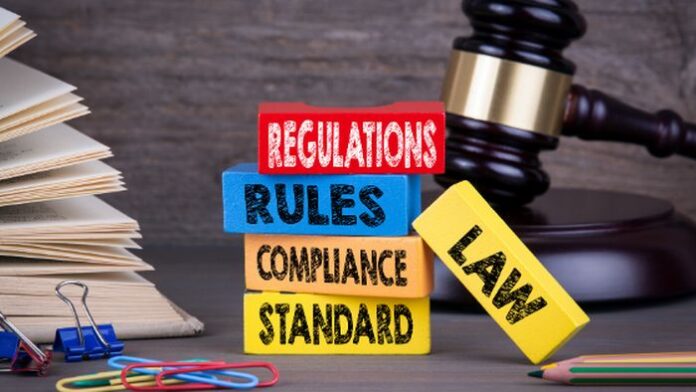When a person is hurt in an accident, they may have a personal injury claim, which is the procedure through which the injured party seeks reimbursement from the responsible party and insurance company for their injuries and damages. Personal injury disputes are frequently handled without the need to file a lawsuit or go to court.
An injured party’s prospects of reaching a fair compensation without the need for more serious legal action will improve if they present a well-supported and documented personal injury claim. This article is a comprehensive guide to personal injury cases and includes tips to understand these stages in detail.
1. Choosing a Representative

Most people who file a personal injury claim do so with the assistance of legal counsel to ensure that their case is presented correctly. It could be a personal injury claims management firm or a law firm of their choice. Many personal injury claims management companies/solicitors specialize in this field, and there is plenty of information on the Internet to help you pick one that is right for you.
You may receive a cold call from a management firm or legal professionals that have heard about your possible case and want to discuss it further. Remember that you are not obligated to hire a representative simply because they contacted you. It is up to you to state your case, and you should be wary of accepting random offers without first conducting further research.
Claimants can seek expert guidance from Scura before filing a personal injury claim because legislation and timeframes can differ in your region, and you will need an expert to navigate you through the process.
2. Protocols for Pre-Action

After you’ve selected a representative, the following step is to follow a prescribed method known as “pre-action protocols.” Once the third party has been identified, a “letter of claim” will be written to them, precisely detailing what happened to the claimant, including any injuries (both mental and physical) incurred, as far as they can be diagnosed at the time.
A “letter of claim” can be received directly from the company/individual, through their solicitors, or insurance company. The third-party has 21 days to respond and acknowledge the letter of claim. A vast majority of claims will be forwarded to the defendant’s insurance carrier, which will most likely handle the matter on their behalf.
The defendant is given three months following the initial response to explore the claim further. They must state whether they accept or deny legal responsibility at the end of this period.
3. Obtaining Extensive Accident Evidence
If the defendant rejects liability, the claimant will have to begin gathering proof. You must gather evidence that incriminates the third party to build the strongest case possible and leave no stone unturned. It would include testimonies from witnesses or people with knowledge of the equipment that is said to have caused the injury.
Because the evidence collection stage could take up to 3 months and 21 days after your original claim, it’s critical to write down specifics at the time of the incident so that you can evaluate it later. Remember that any inconsistencies in your evidence might damage your case and, in some instances, ruin your chances of getting a claim.
4. Obtaining Medical Proof

In some cases where a defendant has admitted liability, there may be no need to collect extensive evidence concerning the accident itself. However, you will have to start gathering medical evidence immediately if culpability is not acknowledged and the defender refuses to assume responsibility.
Medical evidence collection could include anything as easy as access to your GP and hospital records, or it could require you to see a professional for a specific injury. Whether or not the defendant has accepted liability, any reports prepared in support of a personal injury claim will be made available to them.
Claimants will need to keep track of how their injuries influence their day-to-day lives, in addition to the initial injuries caused by the incident. Additional expenses, as well as the influence on your job and personal lives, can be considered.
Again, because it might take you more than three months after filing a claim to acquire reasonable medical evidence, you must maintain a careful record at all times. If a claim is proven, the plaintiff may be eligible to reclaim a variety of additional expenses, including taxi charges, if they were unable to drive due to the incident.
5. Possible Settlement Negotiations
Whether liability has been admitted or denied, this is the pre-court stage where both the parties might negotiate a possible settlement. To cut legal expenses and court time, all parties would want a fair and reasonable settlement as soon as possible. Instead of meeting across the bargaining table, the claimant and defendant are more likely to have their agents try to reach an agreement.
The plaintiff’s lawyer is liable to present whatever figure the defendant’s lawyer offers as settlement (doesn’t matter how high or low). The claimant will have the final say on whether or not they will accept the settlement offer and close the case. The claimant has twenty-four hours to accept the offer, or it will go off the table. While most personal injury claims are resolved without going to court, there are some cases when both parties cannot reach an agreement at the bargaining stage.
It’s worth mentioning that filing court papers are limited to three years from the date of the accident or three years from the date of the child’s 18th birthday in case of a minor. The plaintiff must state the foundation of the claim and the amount they are seeking in the claim form. Apart from this, all particulars and evidence must be delivered to the court to initiate the process further.
Conclusion

Lawyers handling the case must inform the defendant and the plaintiff about the procedure, and each party must be clear on their stand. Although the timetable is flexible in many areas, any evidence required to be submitted in court must first be made available to all parties. A qualified attorney will keep you informed of any developments in the case and help you not fall to the defendant’s techniques and ideas to con you out of your claim money.









